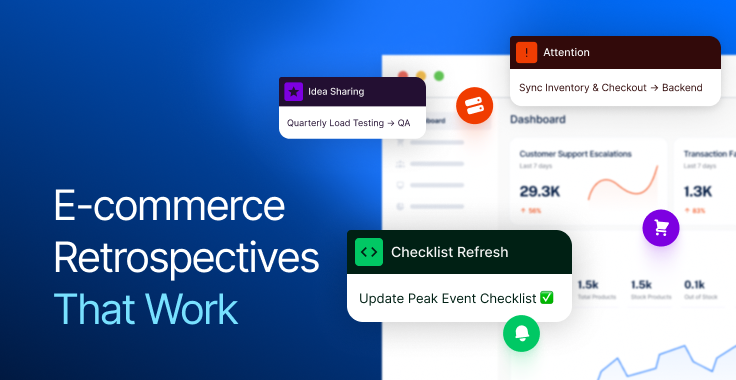In 2015 Magento decided to fully refocus on Magento 2, consequently, the end of life for Magento 1 was announced. Five years later, it is official - Magento 1 no longer will be supported by Magento starting from June 2020. Such an announcement might be pretty worrying and raise a few questions from the merchants. Below you'll find everything you need to know as a merchant regarding the end of life of Magento 1.
What does End of Life mean?
End of Life for Magento doesn't mean that all the shops on it will be stopped or deleted forever, however, starting from June 2020 all the Magento 1 shops will no longer receive official security patches, support, and quality fixes for the system. More about the Magento software lifecycle policy can be read here.
What are the risks of staying on Magento 1?
If you decided to remain on Magento 1, there are a few things to learn about and reconsider your decision. Starting from potential cyberattacks to missing out on what the newest eCommerce solutions could offer you. For Magento 1 Enterprise Edition, it's not just the end of security patches, but also the end of software support. The biggest payment providers including Visa, Adyen and PayPal are already warning merchants using Magento 1 of the platform's security risks and inviting for an immediate action to be taken.
Risk #1, No Security Patches
This is perhaps the most important and worrying consequence of the End of Life. Normally, security patches are released when a developer finds a weak spot in the system. Starting from June 2020, there won't be any new security patches for your Magento 1 store, no matter the size of the security issue found in the system. Meaning that Magento 1 stores will become an extremely easy target for cyberattacks and hacks, which may result in huge financial losses and legal issues. Magento 1 was made to work with PHP 5, however, this version faced its end of life in January 2019. The only solution was to use patches, to make it work with PHP 7.2. This year, PHP 7.2 is having its end of life as well and there won’t be any official patches to make Magento 1 work with PHP 7.3, meaning that there is a risk of underlying software too.
Risk #2, Lost PCI Compliance
Loss of PCI Compliance is a huge deal as when having it your website is secure and meets all the latest security standards or PCI DSS (Payment Card Industry Data Security Standards). If your website deals with payments, following these standards is essential as it ensures the safety and trustworthiness of your eCommerce.
PCI together with 5 major credit card brands have defined 4 levels of PCI DSS compliance. On each level, there are expected particular actions from each merchant - defined as someone who stores, processes, and transmits credit card information and has a merchant ID. The levels are mainly categorized based on annual transactions, reflected below:

According to the PCI DSS requirement 6, merchants should ''develop and maintain secure systems and applications''. That is:
6.1 Establish a process to identify security vulnerabilities, using reputable outside sources, and assign a risk ranking (e.g. “high,”“medium,” or “low”) to newly discovered security vulnerabilities.
6.2 Protect all system components and software from known vulnerabilities by installing applicable vendor-supplied security patches. Install critical security patches within one month of release.
With no further security patches, the requirements can not be met and your Magento 1 eCommerce doesn’t comply with the standards. This means that you are likely to lose PCI compliance if you do not have a plan to migrate over to a supported platform any time soon as while you can answer “No” in the PCI SAQ, you need to have a plan to resolve those issues as soon as possible. As a eCommerce owner, you are responsible for pleasant and secure shopping. Additionally, if you do not comply with PCI a penalty can be imposed.
If you are not sure about your current PCI status for your Magento store, get in touch with us and we will help you with PCI Compliance.
Risk #3, Lack of Quality Fixes
Another consequence of End of Life is no more quality fixes for Magento 1 websites. This may result in broken functionality that will not only make the shopping experience unpleasant. Additionally, there won't be any improvement for existing core features, meaning that soon enough these features will be outdated.
Risk #4, Lack of Extensions
Since everyone is focusing on Magento 2, finding a proper extension for your Magento 1 might be problematic. Most already available extensions will probably not work with custom and unofficial security patches. The only way is to find a Magento agency to modify or improve the extensions, however, that might get pricer with time. Additionally, the lack of extensions means that it's much harder and more expensive to create a pleasant shopping experience in the busy market of eCommerce. Meaning that you are not only vulnerable to hackers but competitors too.
Risk #5, Missing Out on Industry Trends
Being tied to software that doesn't receive any updates means to be destined to stagnation. The industry is changing fast, trends are changing, and never seen innovations are released. Consumers become more demanding and in this busy market, it's essential to give them what they want if you desire to make sales and compete well. As Magento 1 is seen as a dying platform, innovations are not being made to make them work with the outdated version. The one who will be able to adapt to the market is the one who will win.
What's the solution?
One word - Migration. Although Magento 2 would suit most of the merchants wishing to upgrade from Magento 1, other platforms like Shopify should be considered too. Your next platform should manifest business needs that are suitable for you now and will synthesize with your long term plans.
However, if you plan to stay on Magento 1 no matter what there is an option to use the services like Mage One - starting with patching security vulnerabilities to server software support so your eCommerce is capable to run the latest software. Although, they will provide you with security patches, however you’ll still need a professional Magento support agency to apply them. To strengthen your Magento 1 eCommerce and block malicious requests it’s advised to set a proper web application firewall like Cloudflare and implement other security measures. Although, it’s still possible to get the needed patches and run the Magento 1 store, staying on the platform should not be a long term solution. Support of Magento 1 will become only more time and money consuming.
Planning to migrate from Magento 1 but are not sure what platform suits you? Email us right away to info@magebit.com for a free consultation and effective migration plan.

















